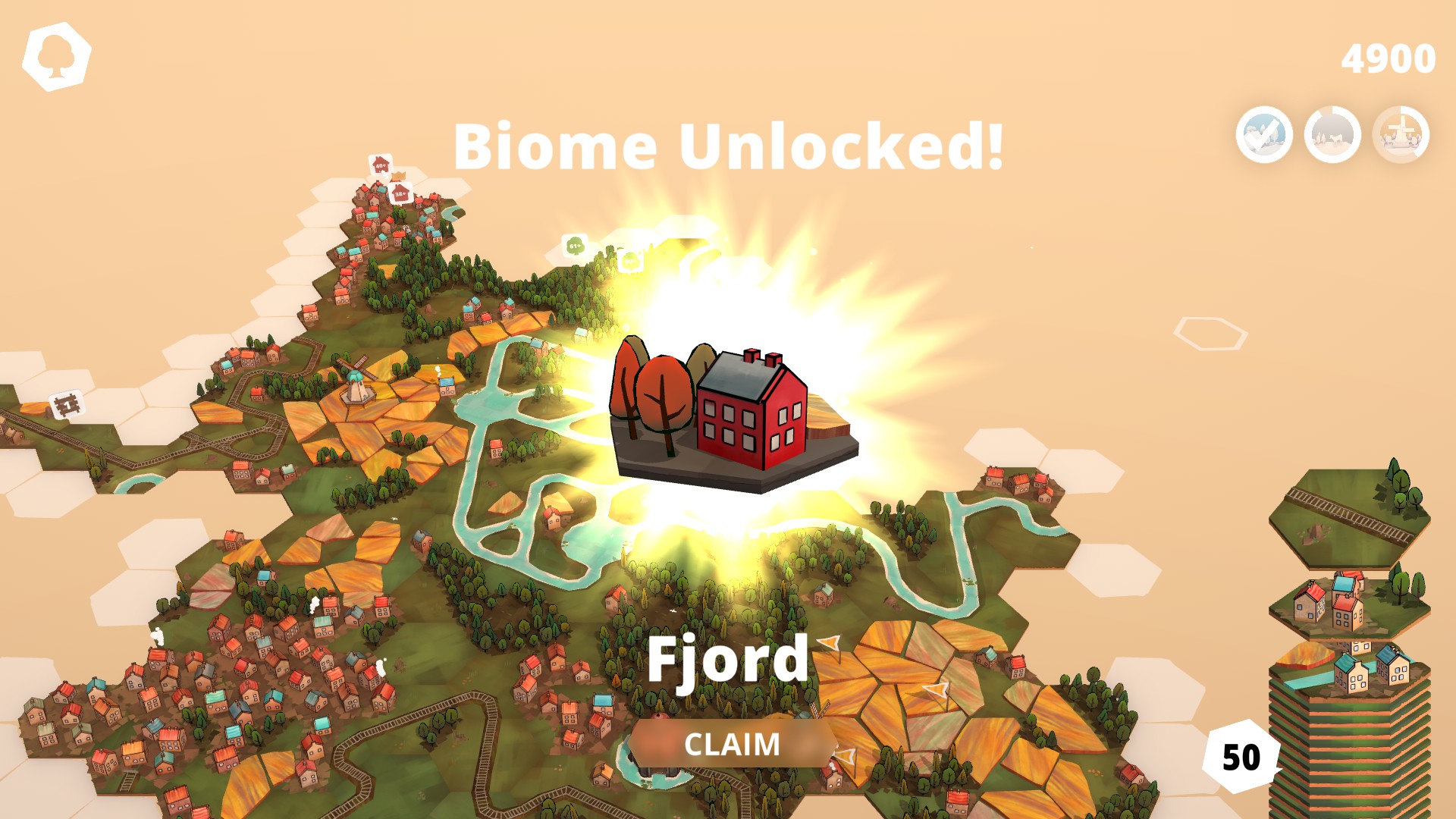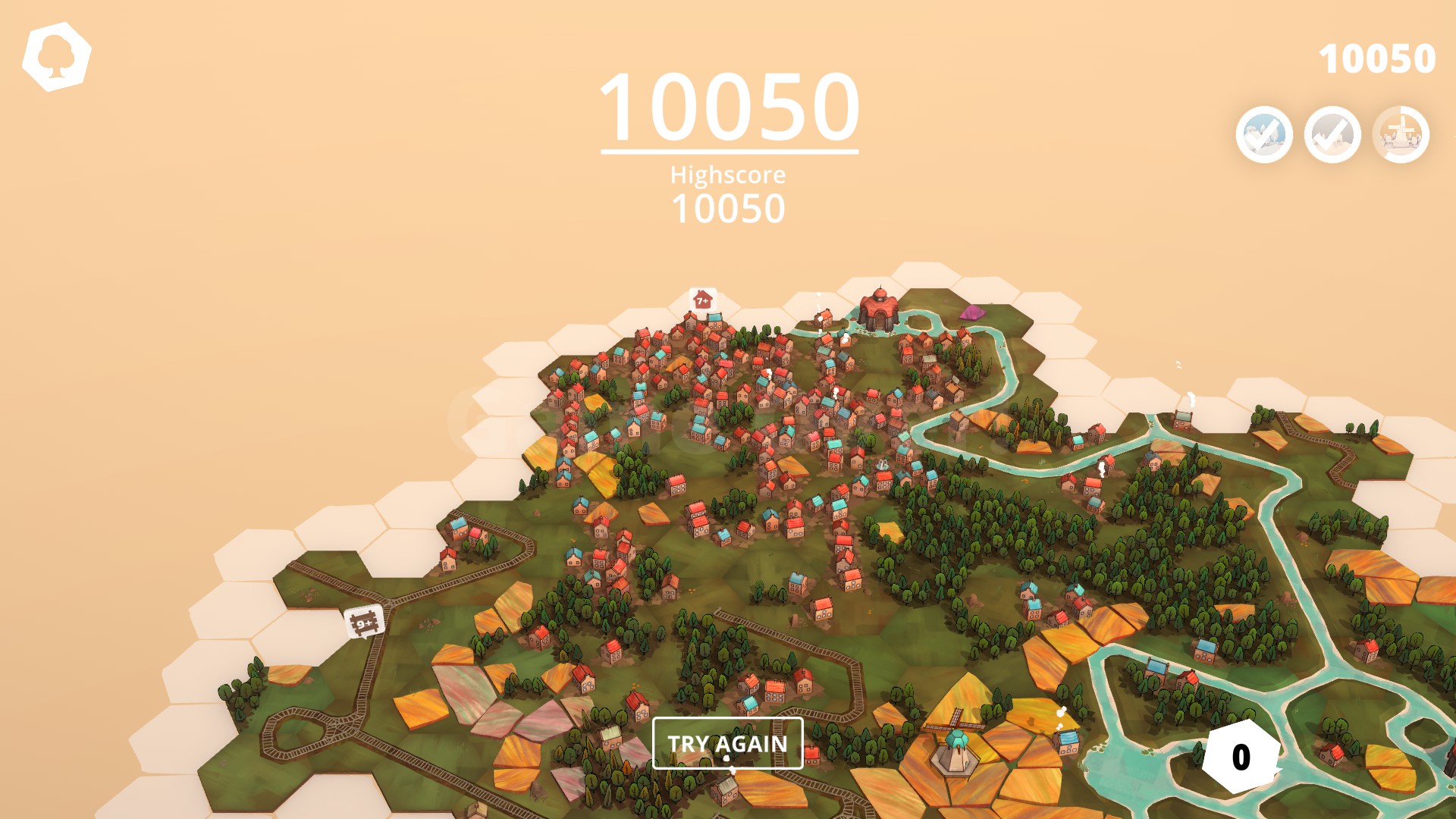Dorfromantik — Mindfulness and strategy collide in a peaceful building game
Computer games can be many things; exciting, tense, inspiring, emotive, challenging, even stressful. Perhaps one thing that we don’t always think of computer games being though, is relaxing, or even tranquil. That’s what Hexcells does for me, that most other games in my collection don’t. I play it most often at the end of a work day as a form of mental warm-down really. Something to bridge the gap between the focus and intensity of work and the downtime of the evening. It uses the brain just enough, and in the right ways, to be interesting and to keep your attention, without being stressful or demanding too much of you. Other people no doubt have their equivalents that they use, in many ways, as a form of mindfulness; pure relaxation. In Dorfromantik I think I might have found another one that fills the same gap.
Something I like to do now and then is to take a scroll through my Steam library on the mobile app because, by default, it lists them in order of time played. Seeing which games have really captured my imagination is interesting and I check in every so often to see how things have changed. Last time I took a look, I saw something quite surprising. 34th on my list of most-played games was Hexcells Infinite. At thirty hours on record I’ve played it more than Stardew Valley, more than Endless Legend or Baldur’s Gate 3, more than Darkest Dungeon or Hitman. Hexcells Plus isn’t too much further down the list, either, at sixteen hours. That I’ve spent nearly fifty hours playing some variation of Hexcells surprised me, but perhaps it shouldn’t, given the niche that it fills in my collection.

The essence of the gameplay in Dorfromantik is very simple. In the bottom-right of your screen is a stack of hexagonal tiles that contain different features of landscape; trees, fields, houses, rivers and train tracks amongst other things. At any one time you can only access the top tile from your stack and you have to place it in the play area, touching one of the sides of a tile that is already down. Matching up the terrain features on the edge of your placed tile with stuff already on the board builds up large areas of that type of terrain, from sprawling farms and forests to winding train tracks and canals. At some point the stack of tiles will be empty and the game will be over, leaving you to consider your score and the picturesque (or, sometimes, not so picturesque) slice of rural paradise you have created.

The main aim of the game, in as much as it has one beyond making pretty landscapes, is to stop that stack of tiles from running out, so you can build and build to your heart’s content (if that’s all you want to do without the gameplay loop, the front-end of Dorfromantik suggests that a creative sandbox mode is on the way). This is accomplished by completing quests that pop-up throughout the game. Sometimes the tile at the top of your stack will have a speech bubble with a symbol and a number in it. This indicates that the piece in question wants to be part of a larger whole; either taking the form of indicating a minimum or an exact size of terrain feature it must be included in. You might have a tile of houses, for example, that tells you it wants to be part of a cluster of at least 200 houses. Or a train track that says it wants to be part of a railway line of exactly twelve pieces. Complete this objective and the game will reward you with a bunch of new tiles added to the bottom of your stack.
Sometimes these quests will spawn flags on completion too. These work slightly differently in that they are asking you to close off the terrain they are in. Say that I managed to build my town of 200 houses and the quest completes leaving a flag behind. If I can manage to seal off all the edges of that town to form a complete border all the way around then the flag will pop off and the reward will be more tiles in the stack.
This is a very simple, lightweight system that adds an edge of challenge and planning to the game that is just enough to keep your brain working but not so difficult that it becomes hard or stressful. It’s a great example of the mechanics working in tandem with the other, more ephemeral, goals of a game. You want to build forests, towns and networks of railways and rivers anyway; the quests just give you a nudge to suggest where you might want to do that to enable you to keep playing for longer. It’s a lovely system, seamlessly integrated into the game.

The other aspect of Dorfromanik that will keep you coming back is collectibility. As you expand your landscape in the game, special tiles will pop up in the distance. Once you connect them to your play area they will unlock a special quest. If you complete that in the current game a new tile will be unlocked in future runs. A couple of these tiles have mechanical benefits (the water train station gives you a point where train lines can cross rivers, for example) but mostly they are cosmetic pieces only. There is nothing wrong with that, however, in a game that is as much about seeing how pretty a picture you can build with the pieces available as it is about getting a high score. Water mills, granaries, windmills, boats and the many other unlockable options really help to give your games a special sense of uniqueness and activity.
Dorfromantik is not a game that you will sit down and plug away at for hours. It’s a game to be enjoyed in bite-size pieces. Twenty minutes here, half an hour there. A chance to escape into your own little world for a short period of time and let your mind relax a bit. As the game progresses through early access towards a full release I don’t doubt that more game modes and more landscape pieces will add plenty of longevity and depth to the game in terms of options and potential. In its current form it is still worth picking up (especially as there is a launch discount on GOG and Steam until the 1st April). Treat your brain to a little therapy.
A pre-launch version of the game was played for this review that does not represent the depth of the full release. Dorfromantik is available for PC now on GOG and Steam.
Comments are closed.